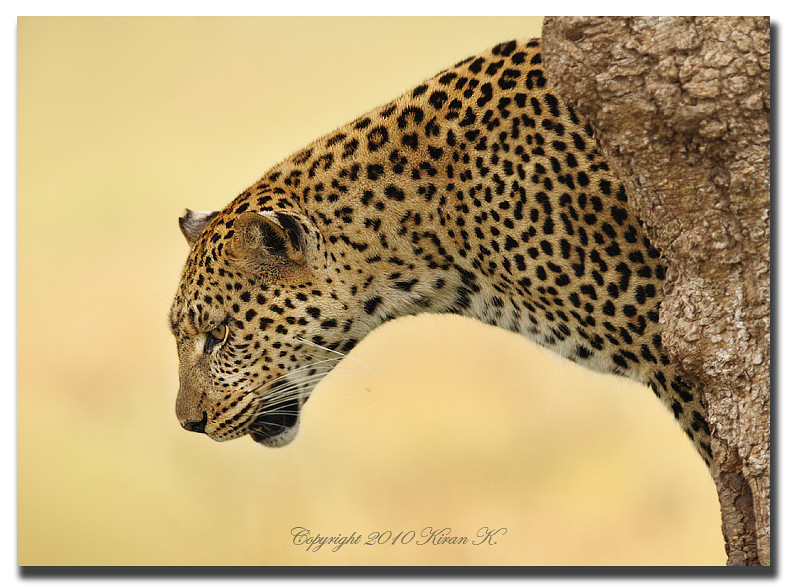This is the blog of Wildlife Photographer Kiran Khanzode. Here, you can stay up to date with information about my trip reports to India, Africa, read tips/techniques, view my image gallery and also stay informed about Workshops/Photo Safaris.
Friday, August 13, 2010
Subject Isolation And Background
While posting an image for critique on some online forums today, I felt that I could share some tips about subject isolation and background that I (try to) use in practice while taking a picture.
It is not always possible to take a picture with the cleanest of backgrounds, especially when shooting wildlife. You take what you can get or try to work the scene in some way that you get the desired effects (in-camera). The least amount of post-processing work makes me the happiest.
First and foremost, a wide aperture lens (200 f/2 or 300f/2.8 or even 500 f/4) is your best friend for creating a shallow DoF and for creating that dreamy background blur or 'bokeh' seen in professional photographers' work. Ideally, if you can get close to your subject and create more distance between the subject and the background (choose your backgrounds wisely, wherever you can), you can get great subject isolation just like a pro where the background melts into a buttery smooth backdrop, gluing the viewer's eyes on the focal point of the image(your subject) instead of having distracting elements (in focus) in the background.
Eg: Take a look at this picture of the Leopard who was high up on that tree in Serengeti on that cloudy day (Cloudy days are good for photography, lighting is even, there are no harsh shadows). Had I take this same picture from the window of my vehicle without getting up on the roof, I would have included dull overcast sky as my background (not desired)and the angle of approach wouldn't have been flattering either. Instead, I chose to get up on the roof of the vehicle, get at eye level of the animal and include the dry brown grass in the background.
Thankfully she was close enough for a 300 mm focal length and the endless plains(uniform in color) in the background made it easy as well. The rest of the job was simple, I shot this picture and others in the series at very wide apertures (f/2.8, f/3.2)which guaranteed a soft, smooth background blur creating a desired effect as required in a portrait. The separation/distance between the subject and the background was so much here that a 300mm f/4 lens could also have done a great job in the situation.
You can apply the same principle for human photography too (especially portraits). Do remember to take as many compositions (horizontal, vertical) as you can from the same scene, provided your subjects allow you the time to do so.
Happy clicking !!!
Subscribe to:
Posts (Atom)
